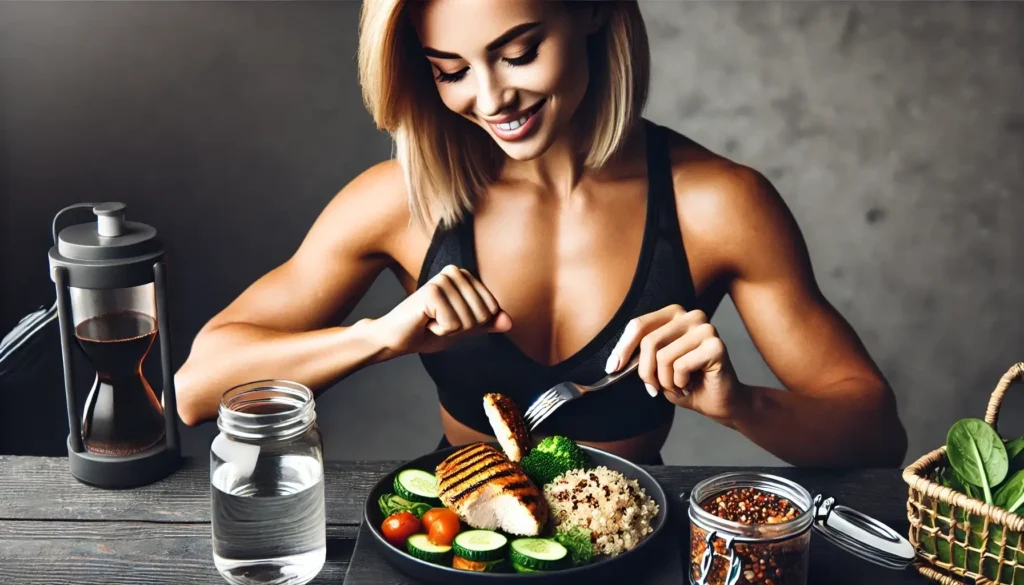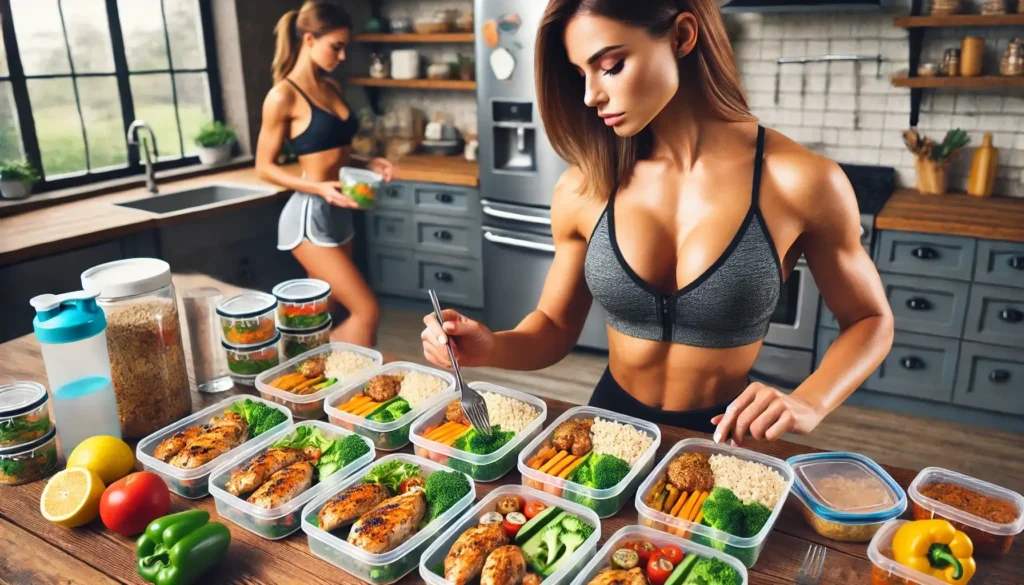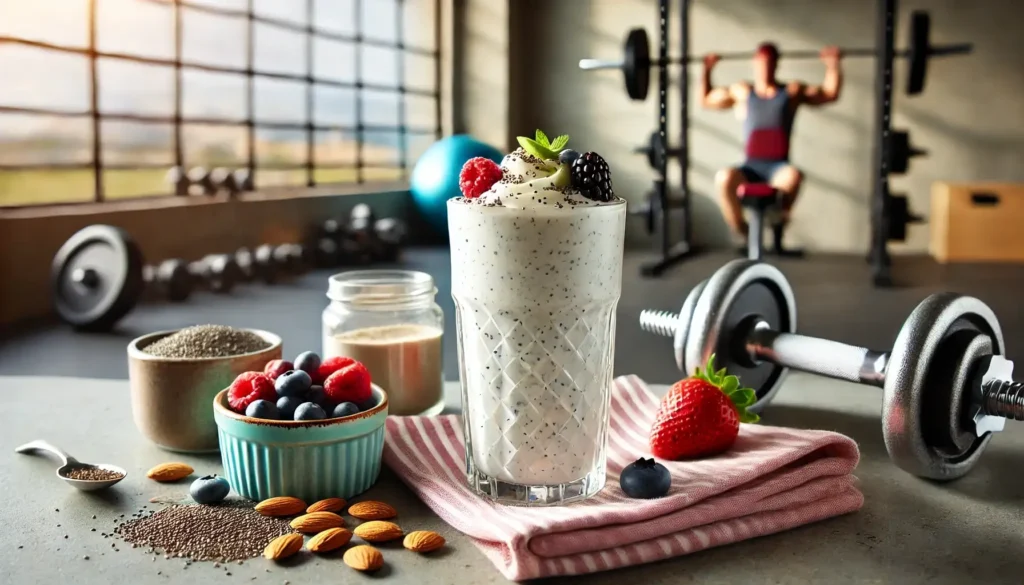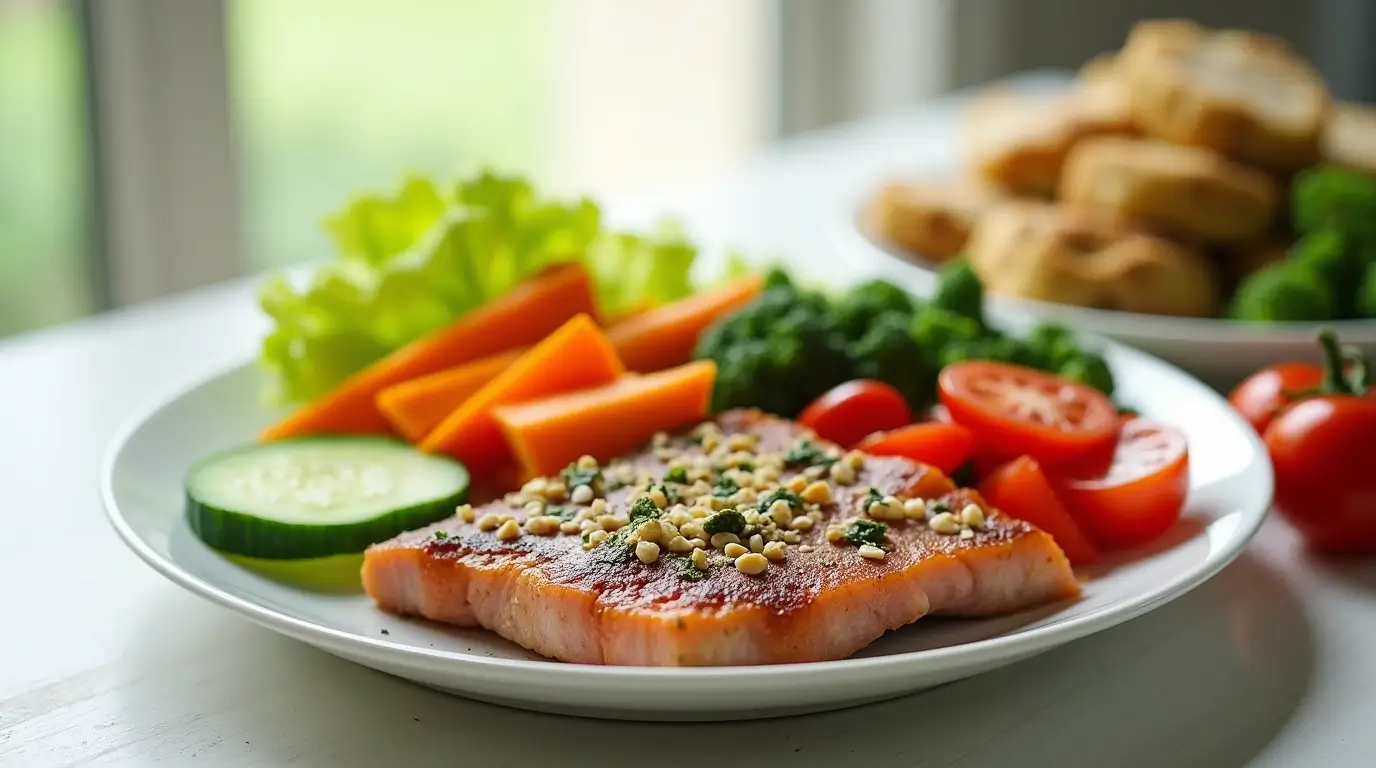The Pursuit of a Healthier You
Have you ever wondered how female fitness models maintain such toned, strong bodies? It’s not magic—it’s all about combining the right training with the proper nutrition. Their diets aren’t just focused on aesthetics; they’re carefully designed to enhance performance, promote muscle growth, and ensure that their bodies function optimally.
If you’re striving for a stronger, leaner body or simply looking to elevate your fitness journey, understanding the diet of a fitness model can provide great insights. You don’t need to be a professional athlete to adopt similar principles into your life. With the right meal plan and smart nutritional choices, you can see impressive results.
In this article, we’ll take a deep dive into the nutrition strategies used by female fitness models. By the end, you’ll have a clear understanding of what a typical fitness model’s meal plan looks like and how you can create your own balanced, effective diet plan to support your fitness goals.
Table of Contents
The Basics of a Female Fitness Model’s Diet

Understanding Macronutrients: The Building Blocks of Nutrition
At the core of any fitness model’s diet are three essential macronutrients: protein, carbohydrates, and fats. These nutrients are vital for fueling your workouts, supporting muscle recovery, and maintaining overall health.
Protein: Fuel for Muscle Growth
Protein is arguably the most important macronutrient for fitness models. It plays a crucial role in muscle repair and growth, which is vital after intense workouts. Protein helps to rebuild the tiny tears that occur in your muscles during exercise, which is what leads to muscle growth over time.
Protein Sources for Fitness Models:
- Chicken breast
- Turkey
- Fish (salmon, tilapia, tuna)
- Eggs and egg whites
- Plant-based sources like tofu, tempeh, and legumes
Fitness models generally consume about 1 to 1.5 grams of protein per pound of body weight to support muscle repair and growth.
Carbohydrates: The Energy Source
Carbs are your body’s primary energy source, especially when you’re engaging in intense physical activity. Female fitness models tend to focus on complex carbohydrates—these provide steady, long-lasting energy as opposed to simple carbs, which can cause blood sugar spikes.
Healthy Carbs to Include in Your Diet:
- Oats
- Quinoa
- Sweet potatoes
- Brown rice
- Fruits and vegetables
Carbohydrates are also important for replenishing glycogen stores in the muscles, which are depleted after intense workouts. Many fitness models aim to include whole grains, vegetables, and fruits in their meals for optimal energy levels.
Fats: Healthy Fats for Balanced Health
Healthy fats are essential for maintaining hormonal balance and supporting cellular function. Female fitness models often consume fats from high-quality sources to keep their body functioning at its best. Fat helps with the absorption of certain vitamins, supports brain health, and even helps with fat loss when consumed in moderation.
Healthy Fat Sources for Fitness Models:
- Avocados
- Nuts (almonds, walnuts, cashews)
- Seeds (chia, flax, pumpkin)
- Olive oil
- Fatty fish (salmon, mackerel)
In general, fats should make up about 20-30% of a fitness model’s daily caloric intake.
Balance is Key: How to Optimize Macronutrient Intake
The key to a successful diet is balance. Fitness models are highly conscious of the proportions of protein, carbs, and fats in each meal. The goal is to consume a sufficient amount of each nutrient, without over-consuming one at the expense of another. A typical fitness model’s meal might consist of 30% protein, 40% carbs, and 30% fats.
However, these proportions can vary based on specific fitness goals, whether it’s fat loss, muscle gain, or general fitness. For instance, someone aiming for muscle gain might eat more protein and carbs, while someone focused on fat loss may adjust their carb intake accordingly.

Commonly Followed Meal Plans for Female Fitness Models
While every fitness model may tweak their meal plans according to their needs, there are some widely used approaches that work for many. Let’s look at two of the most popular strategies.
1. The 5-6 Small Meals Per Day Approach
Eating 5-6 smaller meals throughout the day helps to maintain energy levels, stabilize blood sugar, and prevent overeating. This approach works by keeping your metabolism active and providing your body with a consistent flow of nutrients.
Typical Meals in the 5-6 Meals Approach:
- Breakfast: Scrambled egg whites, oatmeal with berries, and avocado.
- Mid-Morning Snack: A protein shake with a handful of nuts or a piece of fruit.
- Lunch: Grilled chicken, quinoa, and steamed vegetables.
- Afternoon Snack: Greek yogurt with chia seeds and honey.
- Dinner: Grilled salmon, roasted sweet potatoes, and a salad with olive oil dressing.
2. The Intermittent Fasting Approach
Intermittent fasting (IF) is another popular approach among fitness models. It involves fasting for a specific period, usually 16 hours, and then eating all your meals within an 8-hour window. This approach has been shown to help with fat loss while maintaining lean muscle mass.
A Typical Intermittent Fasting Day:
- 12 PM (First Meal): Chicken breast with roasted vegetables.
- 3 PM (Snack): A protein smoothie with berries and spinach.
- 7 PM (Dinner): Fish, quinoa, and a large green salad.
This meal timing works for some because it helps restrict calorie intake and also simplifies meal planning. However, it may not be suitable for everyone, so it’s important to listen to your body.
The Role of Hydration in a Fitness Model’s Diet
Staying properly hydrated is crucial for any fitness model. Water is essential for overall health, muscle function, and performance. Dehydration can impair your workouts and hinder your body’s ability to recover.
How Much Water Should You Drink?
Most fitness models aim to drink 3-4 liters of water each day, depending on their size, activity level, and climate. Keeping your body hydrated also supports nutrient transport to the muscles, which is vital for recovery after a workout.
In addition to water, electrolyte-rich drinks are also often consumed, especially during intense workouts. Electrolytes help to replenish the minerals lost through sweat and maintain optimal muscle function.
Supplements Commonly Used by Female Fitness Models
Supplements can play an important role in a fitness model’s diet. While food should always be the primary source of nutrients, certain supplements can help fill in the gaps and support specific goals.
1. Protein Powders
Protein powders are widely used by female fitness models to meet their daily protein needs. They’re convenient, easy to digest, and can be added to smoothies, oatmeal, or baked goods.
Types of Protein Powders:
- Whey Protein: Quickly absorbed and rich in essential amino acids.
- Plant-Based Protein: Ideal for those who follow a vegan or vegetarian diet.
- Collagen Protein: Known for promoting joint and skin health.
2. BCAAs (Branched-Chain Amino Acids)
BCAAs are essential amino acids that play a key role in muscle recovery. Fitness models often take BCAA supplements during or after their workouts to help prevent muscle breakdown and speed up recovery.
3. Multivitamins
To ensure they’re meeting all their micronutrient needs, many fitness models take daily multivitamins. These can help cover any gaps in their diet, especially when they’re following a restrictive eating plan.

Meal Plan Fitness Female: Sample Day of Meals
Here’s a sample meal plan to give you an idea of what a female fitness model might eat throughout the day:
| Meal | Food Items | Calories | Protein | Carbs | Fats |
|---|---|---|---|---|---|
| Breakfast | Scrambled egg whites, spinach, whole-grain toast | 350 | 30g | 40g | 12g |
| Snack 1 | Greek yogurt with berries and chia seeds | 200 | 15g | 20g | 8g |
| Lunch | Grilled chicken breast, quinoa, and steamed veggies | 450 | 35g | 50g | 14g |
| Snack 2 | Almonds and an apple | 250 | 6g | 35g | 15g |
| Dinner | Baked salmon, roasted sweet potatoes, broccoli | 500 | 40g | 45g | 18g |
This meal plan is just one example of how to combine lean protein, complex carbohydrates, and healthy fats to fuel your body for optimal performance.
The Importance of Timing Your Meals
When you eat is just as important as what you eat. Proper meal timing can make a significant difference in muscle recovery, energy levels, and fat loss.
Pre-Workout Nutrition
Before a workout, you’ll want to consume a meal that’s rich in carbohydrates and moderate in protein. This helps fuel your workout and ensures that your muscles have the energy they need.
Example Pre-Workout Meal:
- A small bowl of oatmeal with a scoop of protein powder and banana.
Post-Workout Nutrition
Post-workout meals are crucial for muscle repair. After exercising, your muscles need protein to rebuild and carbohydrates to restore glycogen stores. A protein shake or a balanced meal within 30-60 minutes of finishing your workout can help maximize recovery.
Example Post-Workout Meal:
- Grilled chicken with brown rice and steamed vegetables.
How to Stay Consistent with Your Fitness Meal Plan
Consistency is key to achieving your fitness goals. Staying on track with your meal plan can be challenging at times, but with the right strategies in place, you’ll be more likely to stick with it.
1. Meal Prepping for Success
Meal prepping is an effective way to ensure you always have healthy meals ready to go. Spend some time each week preparing your meals in advance, so you don’t have to worry about cooking every day. This also helps you stay within your calorie goals and avoid making unhealthy choices.
2. Stay Accountable
Tracking your food intake and progress is essential. Using a food journal or an app can help you stay on track with your nutritional goals. Monitoring your progress will also keep you motivated and help you make necessary adjustments if needed.
FAQ: Meal Plan Fitness Female
How many meals should a fitness female eat in a day?
Fitness females typically eat 5-6 smaller meals a day to maintain energy levels and support muscle recovery.
What are the best foods for a fitness model diet?
High-protein foods like lean meats, fish, and plant-based proteins, along with complex carbs like quinoa, oats, and sweet potatoes, are staples.
Can I follow a fitness model’s diet if I’m trying to lose weight?
Yes! Many of the principles, such as balanced macronutrients and meal timing, can support weight loss while maintaining muscle mass.
Conclusion: The Power of a Well-Designed Meal Plan
The diet of a female fitness model is carefully crafted to fuel their body for maximum performance, recovery, and muscle growth. By focusing on balanced macronutrients, hydrating properly, and timing meals effectively, you can implement these strategies into your own lifestyle to achieve your fitness goals.
Consistency is the key to seeing results. With a little preparation and dedication, you’ll be able to fuel your body like a fitness model and reach new levels of strength, endurance, and health.
By following these guidelines and structuring your meals properly, you’ll be on your way to achieving a healthier, stronger you—just like a fitness model!

